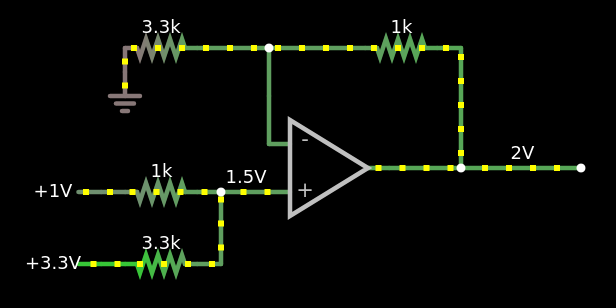Hi,
I am about to use the ADS1115 to sample the open circuit potential from electrochemical biosensors. The potentials will be in the range of +-1V and high input impedance is needed (10^13 Ohm).
I have been looking into how to sample a voltage range of +-1V but I have not figured it out. Some posts mention a level shifting OP-Amp to get voltage in the range between GND and VDD, but is this done with the differential mode or just a single ended reading? What is the recommended setup for this or am I out of luck reading negative voltages?
Regarding the input impedance, is it OK to just use an OP-Amp with a voltage follower setup to buffer the input or will this cause any problems?
Best regards,
Emil



